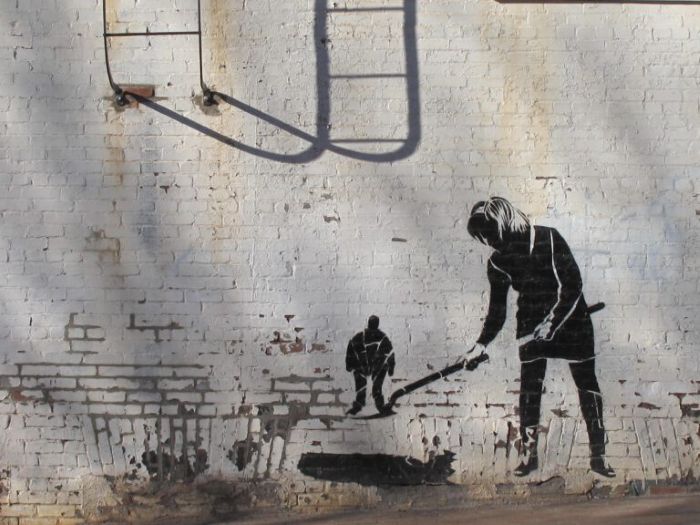Coaching
Topics
Coaching pays off when you address these questions:
- I haven’t reached my goals yet, how to boost my career?
- Success strategies for women's careers; What suits my personal style?
- Should I stay or should I go?
- How to increase visibility and raise my profile?
- My messages are fading - what can I do?
- How to improve leadership effectiveness?
- How can I make the most of my team's skills and improve productivity?
- How to build resilience and manage burnout symptoms?
- Competition, misunderstandings, tensions - looking for solutions!
- Ich hätte gern einen Booster für meine persönliche Entwicklung.
Impulses
Delegation - a small trick with big impact
How to improve the impact of delegation?

Managers often mistakenly believe that they have formulated their objective clearly and unambiguously. They think they have described the task in concrete terms and answered the important questions. There is enough time for the task, there are no pitfalls. However, the results do not meet expectations. The draft written pleading cannot be used, the draft email overlooks essential aspects. The next step is usually to try to be even more precise, to think further about the solutions - without much success. Disappointment clouds the personal relationship, and assumptions are made about lack of competence or refusal. The judgement reads: "...does not move out of the comfort zone", "...does not think things through independently" or "...does not take responsibility for the task".
The frustration is deep. Managers do most of the work on their own. They think through the work process in detail and try to serve everything in bite-sized portions, with the result that many say: "I'll do it faster myself - it's less work and less frustration".
What can be done about this?
Delegation is communication and happens in relationships, so there can be many reasons why delegation fails. In this particular case, a small twist helped.
Instead of thinking through the task completely, the manager should stop after the first outline of the task and ask the other person to describe what he or she has understood. We know this from school or from military services where is is extremly importat that the task is fully understood: "Repeat that in your own words". With this approach, we put the "work" on the table of the other party. We hear where there are uncertainties, where a thought leads astray, but perhaps we also hear new ideas that we ourselves have not thought of. In the mirror of the description we see with which priorities and with which "natural" assumptions we have delegated. We should not, however, place the request for repetition in the context of examination, but in the context of mutual understanding.
Using these phrases can help the conversation:
How would you approach the task? What is your first thought or approach? Where do you see difficulties in implementation? Do you have any idea what could help us, or what would make the solution more effective? What outcome do you expect? What do we need to be able to present the day after tomorrow?
The dilemma of the crown princes and princesses
When a “rising star” becomes a “lame duck”.

In the case of the Crown Prince and the Crown Princess, coaching is requested because their development is stagnating, they are not progressing. They don't develop presence and visibility in the market, and don't start forming their own business.
The qualifications and experience are there, and the support in the organisation and from superiors is also there. Now the question is: were we all wrong? Did we overestimate their talent? Both sides are disappointed. In this stuation coaching requests often come from partners and managers.
The qualifications and experience are there, and the support in the organisation and from superiors is also there. Now the question is: were we all wrong? Did we overestimate their talent? Both sides are disappointed. In this stuation coaching requests often come from partners and managers.
A sketch illustrates the relationship dynamics better than words:

Sketch 1: The crown prince or princess works and acts completely within the sphere of influence of the superior or partner (outer pyramid). Things are going very well for all concerned, the partner oversees and controls asl relevant steps and benefits from the good performance. Crown prince and princess feel supported. They are fully motivated and focused. Working together is fun.
Sketch 2: The system comes under pressure, crown prince and princess have to develop their own brand, and their own style to make a difference. This is demanding and at the same time unfamiliar for both parties. Feelings of competion, rivalry or a lack of gratituide are often involved, criticism increase.
Many withdraw their ambitions - at least temporarily - when it becomes uncomfortable. The system settles down until the next push. It is important to understand that this dynamic is unintentional and only becomes apparent over time.
In the coaching conversation we often discover that the loss of the good relationship plays a central role and we see how important the comfort zone was to grow and develop. We identify what risks can be taken without jeopardising the relationship. We identify the fears associated with further growth and how to prepare oneself tactically and emotionally for it.
Often it is advisable to have a conversation with the partner or manager.
Big sister’s mentality
Women in business recognize it!

Our learning experiences in childhood and adolescence shape our interaction with others, even when we are adults. These patterns can make us very powerful – or permanently hinder us.
What is the "big sister" mentality all about? Let's say your efforts are not rewarded as you expected. Your contributions are appreciated, but others take the credit. Despite all your efforts, you don't feel valued enough. The result is an arduous career and often less attractive roles. The "big sisters" strive to promote others, they take on work to help others and find it difficult to delegate tasks, "I'd rather do it myself“.
At the same time, the work is getting too much for them, and they invest too little in personal development, relaxation and well-being.
The seductive advantage of the big sisters is that they can feel good for a while, because they underpin their competence, they are in a way indispensable and also popular, because all count on them to shovel the coals out of the fire. It is a win-win situation.
But 'big sisters' are also smart, they feel when their situation is threatening, when they are overworking, when they are not being rewarded, and they feel how difficult it is for them to make their demands effectively.
My coaching clients start to recognize how they learned this role and who the "players" were. And they analyze how today differs from yesterday and what powerful options they have. There are proven strategies to reposition themselves and bring them into play. We rehearse the self-presentation, the conversation in which demands are formulated, until they feel really good and have the desire for this change. It is worth it!
* this mentality of the big sister is not limited to female coaching clients, and depending on how roles are distributed in families, it can sometimes be a younger sibling or a male as well. However, women and older sisters predominate.
Frequent Questions
How does coaching start?
I offer a preliminary meeting of about 30 minutes in person, over the phone or virtually. This is to see if we can work well together. I also answer any question about the process. Then you decide whether you want to take the coaching. If necessary, I will make an offer for you personally or for the company.
What is coaching like?
From the outside, a coaching conversation may seem unspectacular, but it is often evolutionary in effect. Coaching is not so much about giving concrete advice but supporting sound thinking, and empowering decisions and new behavioral skills. We sometimes use techniques like figures, drawing, role-playing (simulation), imagination, relaxation and other body techniques, or video training.
Where does coaching take place?
In your company, in your office in a confidential setting or in suitable locations outside your company. Coaching can be very effective virtually. that's proven by hundreds of coaching processes. However, it is more immediate and powerful in presence.
How often does coaching take place?
Sometimes the goals can be achieved with one or two sessions. Often 3-8 sessions are appropriate to accompany a change. The interval between sessions and their duration will depend on the needs. After the first session we usually have a good sense of the right frequency, we can adapt to the dynamics of your "job" and also plan trial phases. Usually, I can also be contacted in between scheduled meetings as a sparring partner.
What else is important?
Regulated confidentiality and data protection. Our time is precious and I strive to make every conversation a win. This also applies to the preliminary meeting.